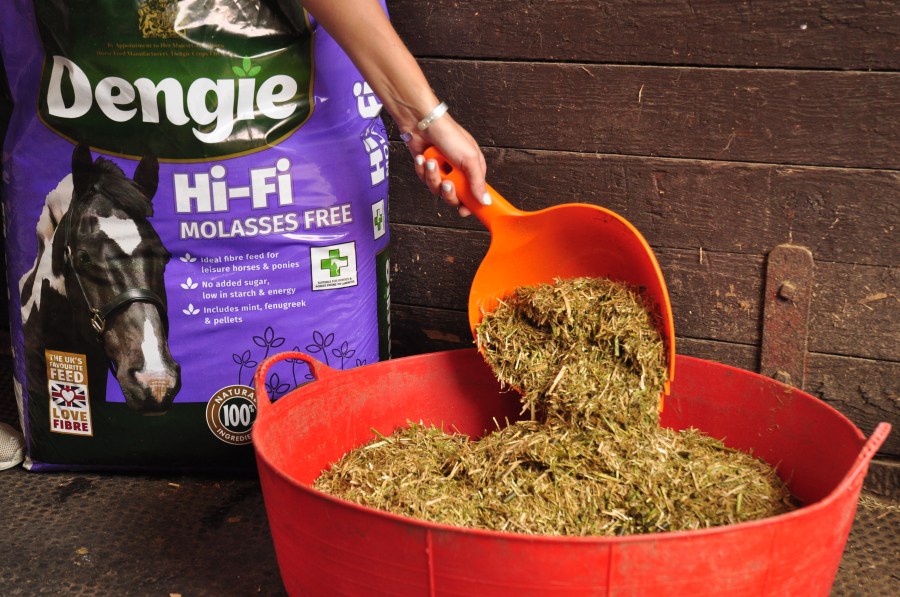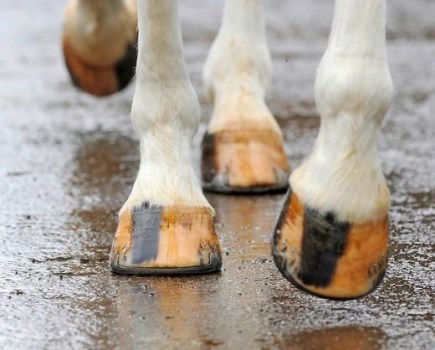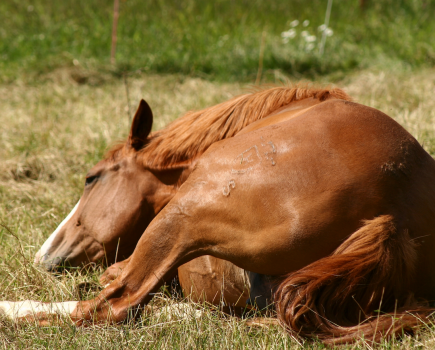*ADVERTISEMENT FEATURE*
The European College of Equine Internal Medicine defines Equine Metabolic Syndrome (EMS) as “a collection of risk factors for endocrinopathic laminitis”. So what does this mean? Katie Williams M.Sc. (Dist) R Nutr, from Dengie, explains.
The first key point to note is that EMS is a syndrome which means there are known risk factors or symptoms but the direct cause is not always understood. In the case of EMS, this means we know these risk factors increase the risk of laminitis we just don’t know why in every case.
The other key point is that they are risk factors which means that not every horse or pony with one or more of these risk factors will go on to develop laminitis. However, the chances are greatly increased especially if a combination of unfavourable circumstances all happen at once i.e. the perfect storm of risk factors occurs.
Lastly, endocrinopathic laminitis is laminitis that occurs as a result of disruption to the endocrine (hormone) system in the body. There are other causes of laminitis but endocrinopathic causes are widely accepted to be the most common in equines in the UK due to high levels of obesity in the leisure horse population in particular.
Risk factors for Equine Metabolic Syndrome
Insulin dysregulation (ID) is considered to be the key feature of EMS that predisposes a horse to laminitis. Chronic obesity is the key risk factor for ID and there have been studies to show that feeding diets high in non-structural carbohydrate (NSC) (sugar and starch) can reduce insulin sensitivity in horses currently at a healthy weight.
Obesity and endocrine changes
Adipose tissue (fat) has the ability to produce hormones which are the chemical messengers in the body and when there is a lot of adipose such as in obese individuals, it can disrupt the normal balance of hormones produced. The most significant hormonal change is to insulin function.
Hyperinsulinaemia is the term used to describe elevated levels of insulin which can occur as a result of reduced insulin sensitivity – because the insulin doesn’t have the usual effect, the pancreas produces more and more insulin so levels in the blood go up and up. However, studies have shown that hyperinsulinaemia can occur independently of horses being insulin resistant and so other issues can clearly affect the endocrine system too.
One of the consequences of ID is that horses and ponies have an abnormal response when they consume sugar and starch (NSC), even in small amounts. A study by Macon et al (2021) demonstrated that even very low levels of NSC can elicit this exaggerated response in those with ID. However, it is important to note that the feed was consumed in around 10 minutes.
How quickly a horse eats matters too
Other studies found that when straw was included in the ration, the rate of intake was so slow that there was no discernible insulinaemic response (Jansson et al, 2021). Whilst this related to the forage ration, the principle suggests that if we can slow the rate of intake of the bucket feed using a chopped fibre feed, it is likely to reduce the insulinaemic response too.
It is our belief that it isn’t just levels of NSC in feeds that matter — the rate at which the feed is consumed is really important too. This is why we encourage the use of low calorie, low sugar, chopped fibre feeds such as Dengie Hi-Fi Molasses Free to mix with balancers and supplements to slow the rate of intake to try to reduce the risk of this exaggerated response.
Better still, using a fortified feed such as Dengie Healthy Hooves Molasses Free means the nutrients can only be consumed slowly as they are already mixed in to the fibre!
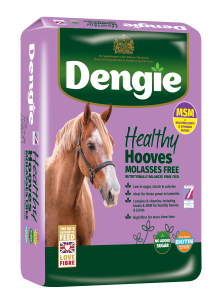
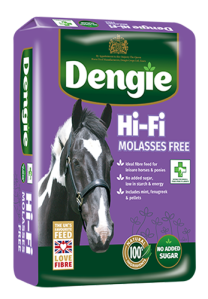
For further information or friendly feeding advice visit Dengie.com to complete our online Feed Advice Form or call 01621 841188.
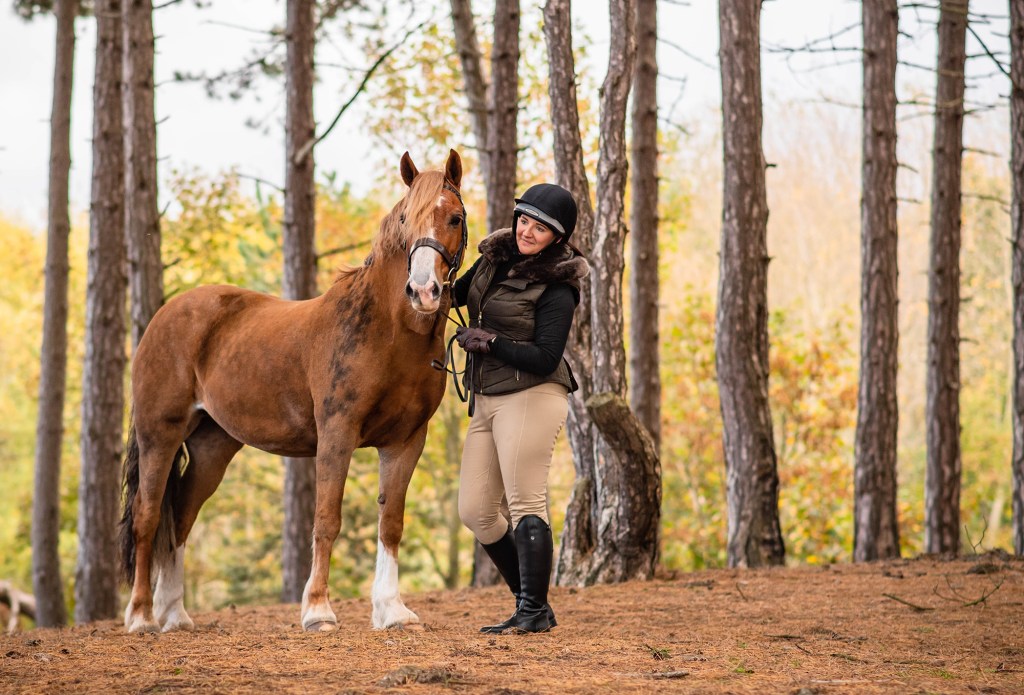
Naomi feeds Seren Healthy Hooves Molasses Free. “Dengie Healthy Hooves Molasses Free is perfect for Seren,” says Naomi. “It’s low in calories, sugar and starch; includes biotin and MSM to promote healthier joints and hooves; all essential elements Seren needs from her feed. She’s healthy, happy and we’re out having fun!”

